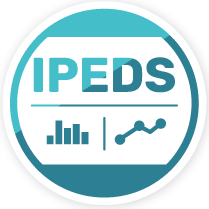Beyond Compliance and Through Uncertainty: Our Commitment Endures
As data professionals, we find ourselves in one of the most unsettling reporting environments higher education has faced. The uncertainty is real; shifting federal priorities, new requirements, and unclear guidance makes even routine compliance a challenge. Complexity has always been part of our work, but this moment is defined by unpredictability, which threatens our ability to meet requirements and undermines our commitment to producing accurate, consistent, and trustworthy data.
And that commitment matters far beyond compliance. Our data inform the decisions made by higher education colleagues, students, policymakers and legislators, and feed third-party tools, rankings, and scorecards. What we produce matters well beyond our offices, making the instability in today’s reporting environment especially consequential.
A Changing Federal Climate
Signals from the current administration have left many of us feeling that federal higher education policy is tilting in a more skeptical, if not hostile, direction. Whether reflected in regulatory proposals, public messaging, or agency priorities, this environment raises longer-term concerns about how our colleges and universities will be treated—and how much stability we can expect.
Staffing reductions at the U.S. Department of Education and adjacent statistical agencies, including the National Center for Education Statistics (NCES), mean fewer people are providing guidance. We are often left waiting on delayed communications and navigating incomplete instructions or shifting directives. The result is an atmosphere of uncertainty that complicates already demanding reporting cycles and undermines our confidence that we can deliver data of the quality our professional standards demand and stakeholders deserve.
Expanding Reporting Burdens
At the same time, we are confronting new reporting requirements that add both volume and complexity, including:
Financial Value Transparency & Gainful Employment (FVT/GE). Now in the second cycle, these regulations require institutions to disclose program-level cost, financial aid, and outcomes data, while career-focused programs face accountability tests such as debt-to-earnings ratios and earnings premium benchmarks. Even institutions without GE-classified programs must comply, ensuring the burden reaches nearly every Title IV-eligible institution. These disclosures are not just intended for compliance as they can also shape how students, families, and policymakers assess and understand program quality and return on investment.
Admissions and Consumer Transparency Supplement (ACTS). Proposed as an addition to IPEDS, ACTS would require four-year institutions with “selective” admissions to submit six years of highly detailed undergraduate and graduate admissions data. With inconsistent historical data availability, lack of clear definitions, and privacy risks in disaggregation, implementation challenges threaten the dataset’s reliability. This isn’t just an administrative burden; the inconsistencies in institutional data endanger the quality of information relied on by students, policymakers, and the public if presented as comparable. At the Association for Institutional Research (AIR), we have gathered feedback from our community in a recent survey and report on ACTS, which highlights significant concerns about feasibility, timelines, and data quality.
One Big Beautiful Bill Act (H.R. 1). This sweeping reconciliation bill introduces new institutional accountability measures that are not yet fully defined or operationalized. For example, one provision would bar any program whose graduates don’t earn more than an adult in the same state with only a high school diploma from accessing federal student loans.
Together, these examples show how our regulatory load is growing and becoming more unpredictable. The greatest concern is not just the work; it is whether we can ensure that what we report maintains our professional standards.
The Human Cost
Although compliance reporting has never been optional, today’s environment introduces new challenges:
- Uncertainty in guidance from shifting directives, slowed communications, and limited staff.
- Increased workload from new reporting streams layered onto an already full reporting calendar.
- Heightened stakes tied not only to institutional accountability, but to the credibility of data that drives policy, shape rankings, and inform the choices of students and families.
For leanly staffed offices, these conditions heighten our stress as data professionals, driven by the tension between our commitment to producing high-quality, trustworthy data and the reality of unclear expectations and shifting requirements.
Support in Times of Change
AIR is not standing outside of this reality—we are part of it. We are responding with practical resources and guidance to help manage uncertainty and meet compliance obligations with confidence, while safeguarding the integrity of the data that so many others depend upon.
To meet the growing demands of the IPEDS reporting cycle and other federal compliance reporting, we offer a tiered approach to support that recognizes the different levels of need across our community:
- Advocacy and community voice. We continue to raise data professionals’ concerns with policymakers, ensuring that the practical realities of reporting are considered.
- Informational sessions. Broad-based sessions to help our community understand reporting requirements and their implications.
- Deep-dive technical training. Targeted offerings to support the collection, compiling, and reporting of the more difficult data elements.
- One-on-one technical assistance. Direct advising from seasoned IR/IE professionals with hands-on experience in navigating complex reporting requirements.
- Consulting and direct support. Hands-on support for institutions without the capacity to manage the workload internally, moving beyond advising to actively assist in compiling and submitting required data.
This tiered approach is especially critical as we prepare for the proposed ACTS, which adds new challenges of scope, complexity, and feasibility. ACTS has shaped much of our planning, but AIR’s commitment is broader: ensuring no institution navigates federal compliance requirements in isolation, whether facing new requirements or long-standing complexities.
Looking Ahead
While the reporting environment is unlikely to simplify soon, we do not face these challenges alone. By strengthening our offices and leaning on our colleagues within the AIR community, we can meet our obligations and continue serving students and institutions.
The assertion often attributed to Gandhi fits our context: “The enemy is fear. We think it is hate, but it has always been fear.” In our case, fear takes the form of uncertainty about shifting requirements, what comes next, and whether we will have the information and resources we need. But fear doesn’t need to define our work. By standing together and upholding the professional ethics and integrity that guides our field, we can move beyond uncertainty and continue the essential work our institutions and students depend on.
Start the Conversation
Whether you need extra capacity, hands-on support, or group training, we’re here to help. Reach out today to start a conversation about the solutions that fit your needs.



